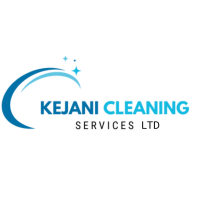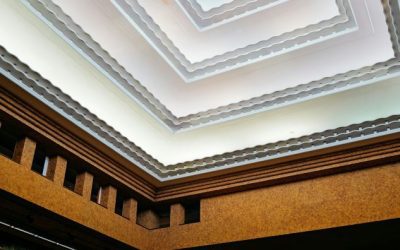Cement dust is one of the most stubborn and hazardous residues left behind after a construction or renovation project. It settles on every surface—from floors and windows to walls, ceilings, and even inside appliances. Not only does it make the area look unfinished, but it can also be harmful to health and damaging to sensitive materials if not properly removed.
Whether you’re cleaning a newly built home, office, warehouse, or a commercial space, knowing how to remove cement dust safely and effectively is crucial for achieving a clean, dust-free environment.
In this guide, we will explore:
-
Why cement dust is difficult to clean
-
Tools and products you’ll need
-
Cleaning techniques for different surfaces
-
Eco-friendly alternatives
-
Tips for preventing dust buildup in future construction jobs
Why Cement Dust Is a Problem
Cement dust is composed of tiny, dry, abrasive particles that can easily become airborne. When inhaled, it poses health risks such as respiratory irritation and long-term lung damage. On surfaces, it leaves behind a chalky film that can:
-
Scratch delicate materials like glass and polished wood
-
Clog electronics and HVAC systems
-
Dull floors and paintwork
-
Cause discoloration if left for too long
Tools and Supplies You’ll Need
Before you begin, gather the right tools to ensure an efficient and safe cleaning process.
🧰 Essential Tools
-
HEPA vacuum cleaner (not a regular vacuum)
-
Microfiber cloths or dusters
-
Soft-bristle broom or dry mop
-
Mop and bucket
-
Spray bottles
-
Squeegee
-
Face mask and safety goggles
🧴 Cleaning Products
-
Warm water
-
Vinegar (for mild acidic cleaning)
-
Mild dish soap or castile soap
-
pH-neutral floor cleaner
-
Baking soda (for stubborn buildup)
-
Eco-friendly options: Grounded multi-surface cleaner (Kenyan-made and biodegradable)
General Steps to Remove Cement Dust
1. Ventilate the Area
Open windows and doors to improve air circulation and reduce dust inhalation risk.
2. Dry Dust First
Avoid wetting cement dust initially—it can create a paste that smears and hardens.
-
Use a HEPA vacuum or soft dry mop to remove loose dust from floors, walls, and furniture.
-
Avoid sweeping with a hard broom, which stirs dust into the air and scratches floors.
3. Wipe Surfaces with a Damp Cloth
After dry cleaning:
-
Use a microfiber cloth dampened with water and a few drops of mild soap.
-
For glass and stainless steel, use vinegar and water (1:1 ratio) in a spray bottle, then wipe with a clean cloth.
How to Remove Cement Dust from Different Surfaces
🪟 Glass Surfaces (Windows, Mirrors)
-
Spray a mixture of vinegar and water.
-
Let it sit for 1–2 minutes.
-
Use a squeegee or microfiber cloth to wipe clean.
-
Avoid abrasive pads—they can scratch the glass.
🧱 Tiles and Grout
-
Use a pH-neutral tile cleaner or diluted vinegar.
-
Scrub with a soft brush or sponge.
-
Rinse with warm water and dry with a towel.
🪵 Wood Surfaces (Floors, Furniture)
-
Avoid vinegar—it may damage the finish.
-
Use a damp microfiber cloth with mild soap or an eco-safe wood cleaner.
-
Dry immediately with a soft towel to prevent water damage.
🛋️ Upholstery and Fabric
-
Vacuum thoroughly using a brush attachment.
-
Use a damp cloth to blot (not rub) any dust residue.
-
If necessary, steam clean using a fabric-safe solution.
🧴 Appliances and Electronics
-
Use a soft, dry microfiber cloth.
-
Use compressed air to blow out dust from vents.
-
Avoid spraying liquids directly onto devices.
Removing Hardened Cement Dust or Paste
If water was accidentally applied to cement dust, it may have formed a paste or crust. Here’s how to remove it:
Method:
-
Scrape gently using a plastic scraper or putty knife.
-
Soak the area with vinegar to loosen the bond.
-
Wipe clean and rinse with warm water.
💡 Pro Tip: Use baking soda paste (baking soda + water) to lift tough residues from tiles or concrete without damaging the surface.
Eco-Friendly Cement Dust Cleaning Methods
Harsh chemicals aren’t always necessary. You can use:
🧼 Vinegar + Water
Great for glass, tiles, and non-porous surfaces. Avoid on natural stone.
🧽 Baking Soda Paste
Mix baking soda and water to form a scrub-safe paste for stubborn residues.
🌿 Grounded Multi-Surface Cleaner (Kenyan Product)
Made locally in Kenya, Grounded products are:
-
Biodegradable
-
Non-toxic
-
Safe for kids, pets, and sensitive surfaces
Their multi-surface cleaner and floor cleaner are particularly useful for post-construction cleaning.
Preventing Cement Dust Build-Up in Future Projects
-
Seal off clean areas using plastic sheets or dust barriers.
-
Cover floors and furniture during work.
-
Schedule frequent cleanups during the construction timeline.
-
Use industrial vacuums on construction sites to limit spread.
When to Call the Professionals
If the project is large or the surfaces delicate, it’s best to hire a professional post construction cleaning company like Kejani Cleaning Services Limited, especially if:
-
The dust has infiltrated HVAC systems
-
You’re dealing with multi-story buildings or large warehouses
-
There are tight deadlines (e.g., move-in dates)
-
You need sanitization and safety compliance after cleaning
Conclusion
Cement dust may seem like a minor inconvenience, but if left unchecked, it can affect the aesthetics, functionality, and health safety of your space. With the right tools, gentle cleaning agents, and a bit of elbow grease—or with help from professionals—you can restore your building to a spotless, move-in-ready condition.
Need expert help with cement dust cleaning in Nairobi, Kisumu, or Mombasa?
Visit www.kejanicleaning.co.ke or call us today for a free quote.





0 Comments